By 1900, the Maxim gun had practically become synonymous with machine gun with most military planners.
Yet, what is also notable is that both nations had Americans to thank.
After his death in 1885, Hotchkiss et Cie continued under the direction of another American, Laurence Benet.

A U.S. Army machine gun team operates a Hotchkiss MG on the range near Froissy, Oise, France, in May 1918. Image: Army Heritage and Education Center
It was the first true attempt to create a gas-actuated machine gun.
As a result, Odkolek lost out on what would have been a near fortune!
It proved to be only moderately reliable its primary issue being that it was prone to overheating.
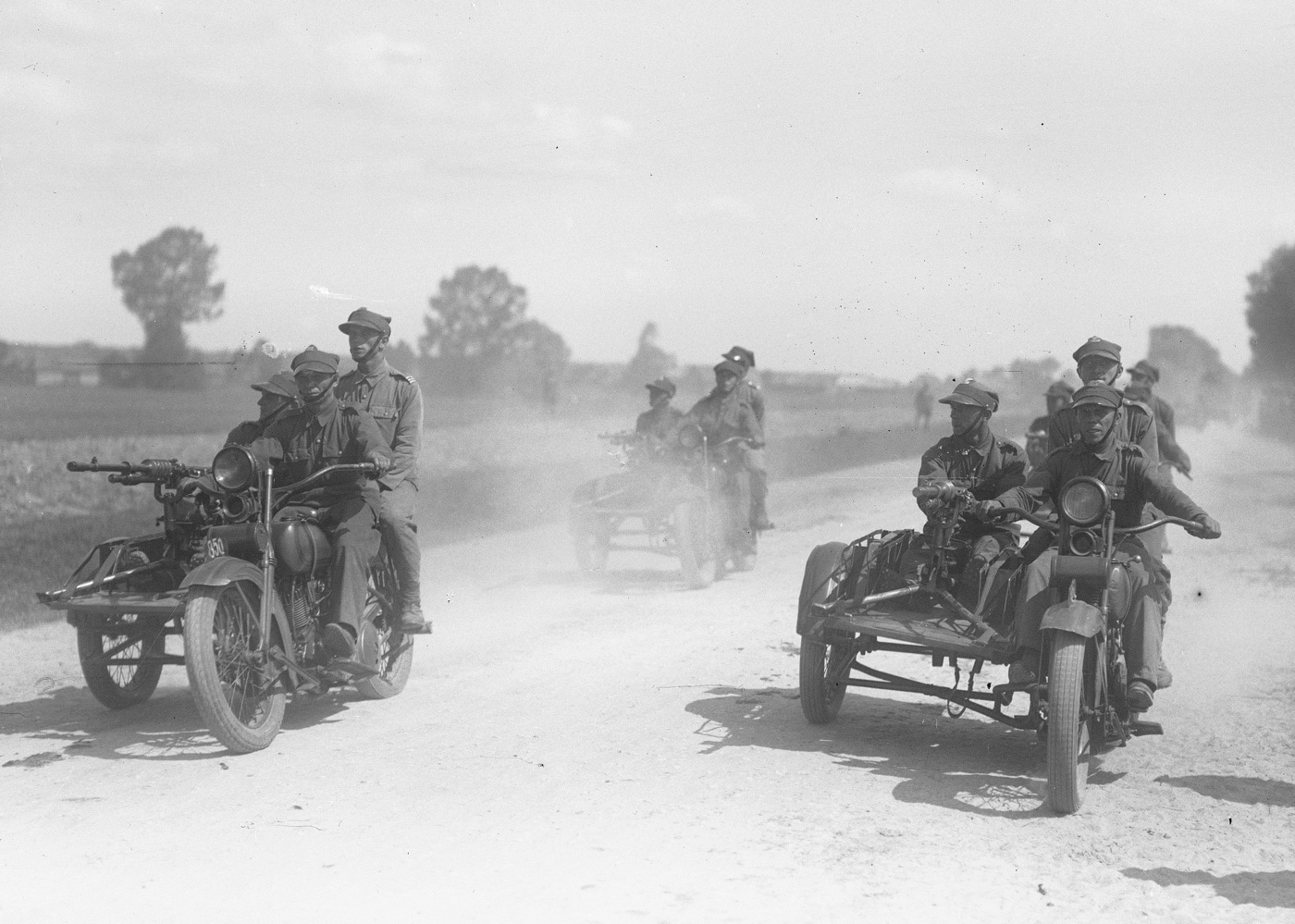
A platoon of motorcyclists on Harley-Davidson JD-1200 motorcycles with mounted Hotchkiss Mle 1914 machine guns mounted on sidecars, circa 1932. Image: National Digital Archives of Poland
As with Brownings Model 1895 machine gun, the weapon was air-cooled rather than water-cooled like the Maxim design.
Benet attempted to address the issue in the subsequent Mle 1900, which employed steel cooling fins.
The first attempt to improve upon the Hotchkiss Mle 1897/1900 was the Puteaux, which was developed in 1905.
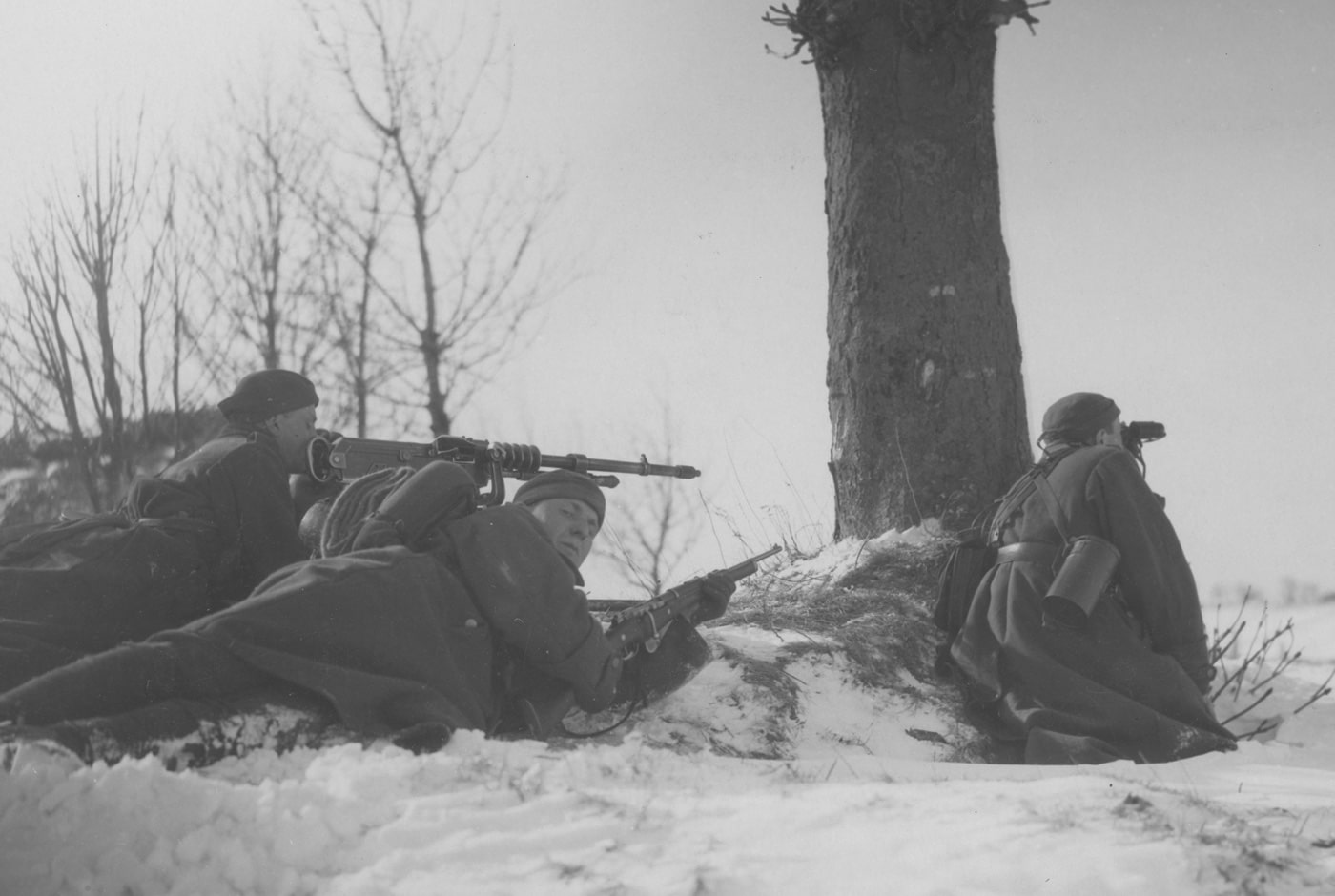
In 1934, Polish soldiers man a Hotchkiss machine gun chambered in 7.92×57 Mauser. One of the soldiers is holding a Berthier Model 1916 carbine. Image: National Digital Archives of Poland
It was heavy, unreliable and did little to address the overheating issues.
The Puteaux was eventually relegated to use in Frances frontier forts.
It was a complicated machine gun, but it was a truly French designed, which satisfied Paris.
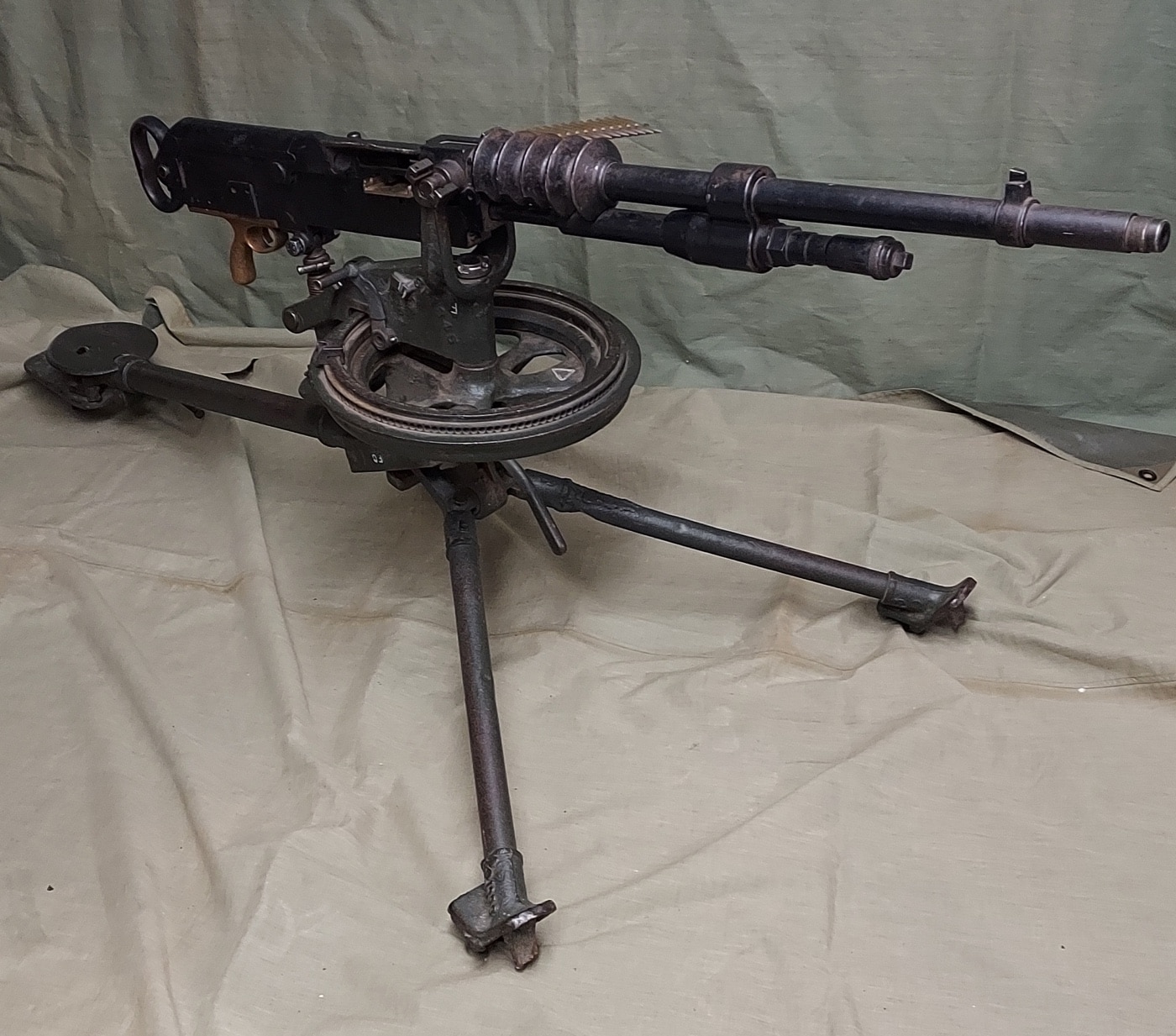
The Hotchkiss Mle 1914 was not a perfect firearm, but it was one of the first successful gas-operated designs. It remained in use throughout the end of the Second World War. Image: Author’s collection
In the muddy conditions, it was a disaster waiting to happen.
The weapon was later supplied to French allies while many were sent to the French Foreign Legion.
By 1916 it had become the main frontline machine gun of the French Army.
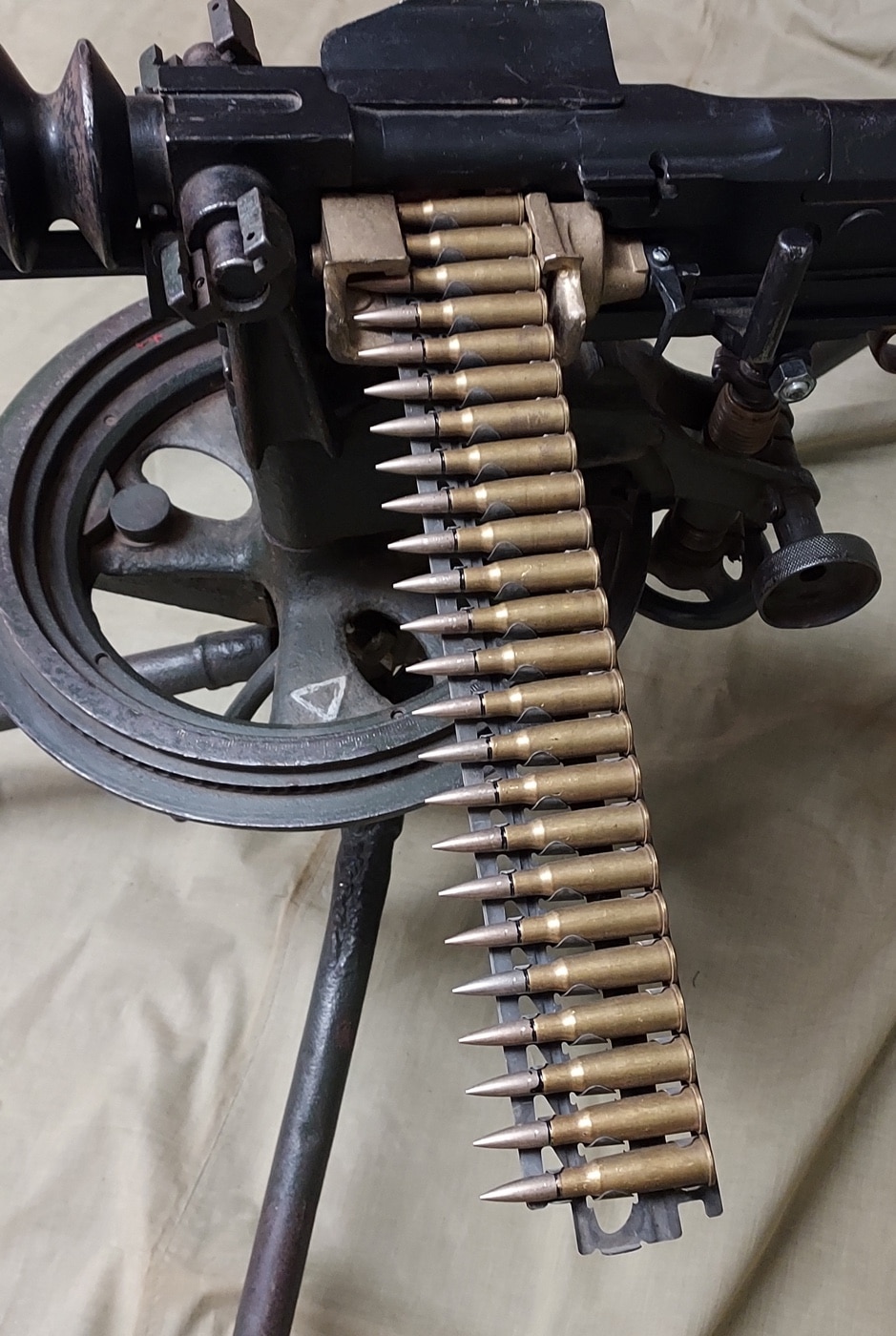
One of the biggest drawbacks of the Mle 1914 was that it was fed from metal strip clips. However, this probably helped to lower the rate of fire and keep the barrel from overheating. Image: Author’s collection
It proved to be a reliable, albeit heavy and bulky machine gun.
Not all of its quirks had been fully addressed, however.
That proved to be harder to accomplish in combat than the designers might have expected.
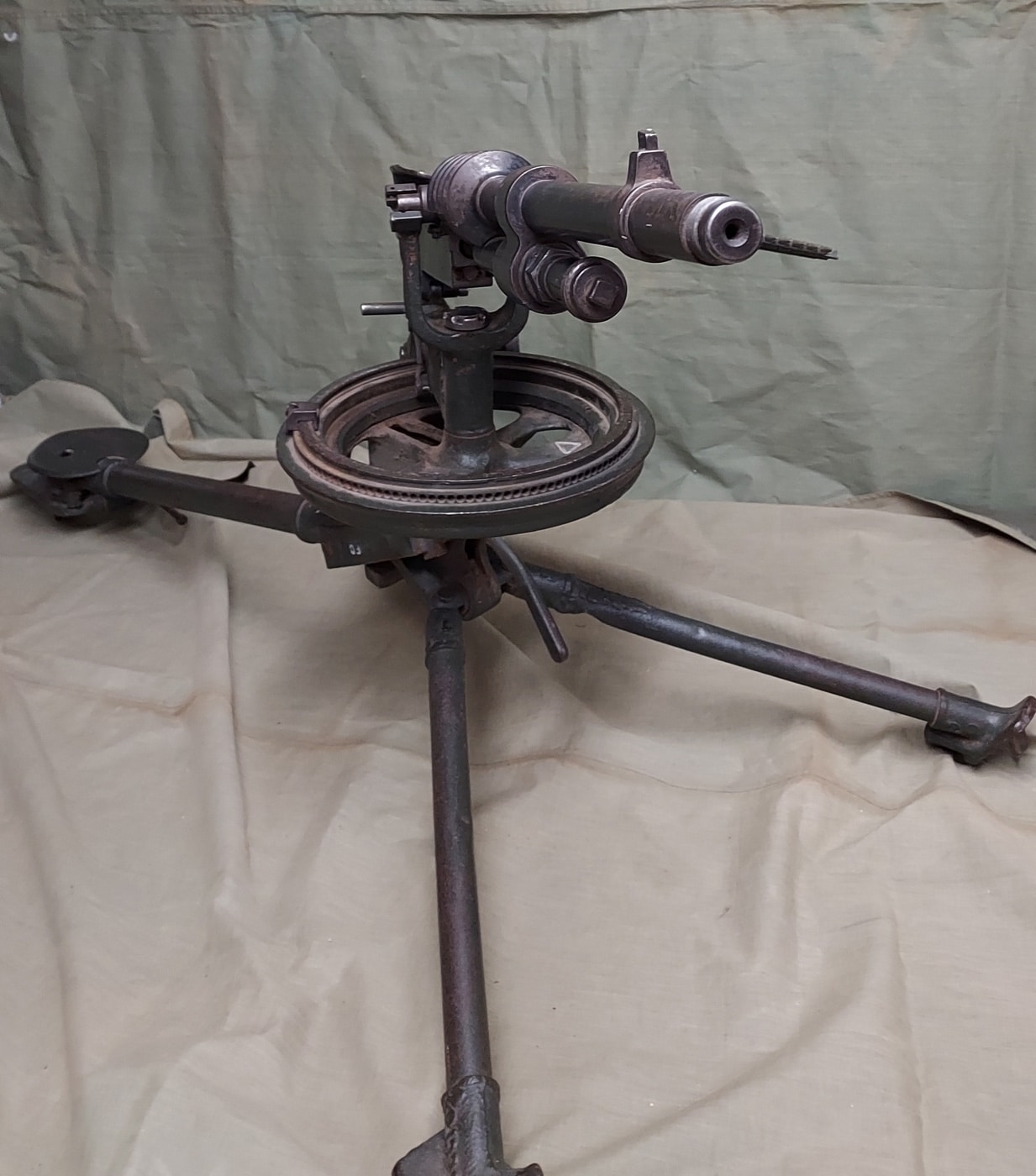
The U.S. Model 1916 tripod allowed for a near 360˚ rotation of the Mle 1914 machine gun, but it was extremely heavy. It is unclear as to how many M1916 tripods were used. Image: Author’s collection
But that was probably a good thing.
In sustained fire in the trenches the barrel could glow red-hot despite the cooling fins.
Twelve divisions of the American Expeditionary Force (AEF) in France were also equipped with the weapon.
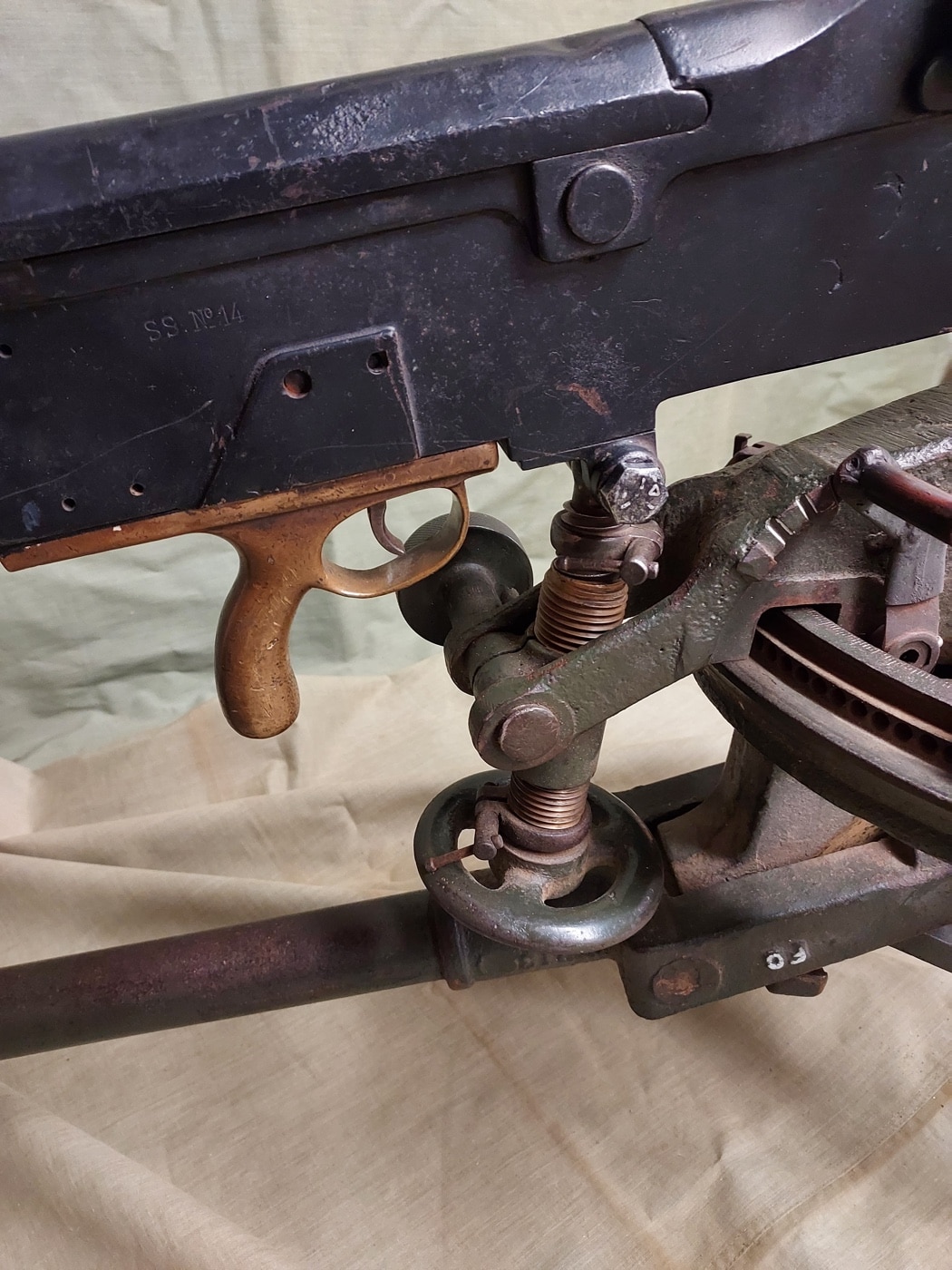
The Hotchkiss Mle 1914 was unique in that instead of spade grips, it employed a pistol-style trigger grip. Elevation of the weapon could be easily adjusted near the pistol grip. Image: Author’s collection
Approximately 2,500 were manufactured, and it remains unclear how many were actually sent to France.
Conclusion
The combat history of the Hotchkiss series of machine guns is mixed.
It was fairly easy to maintain, but heavy.
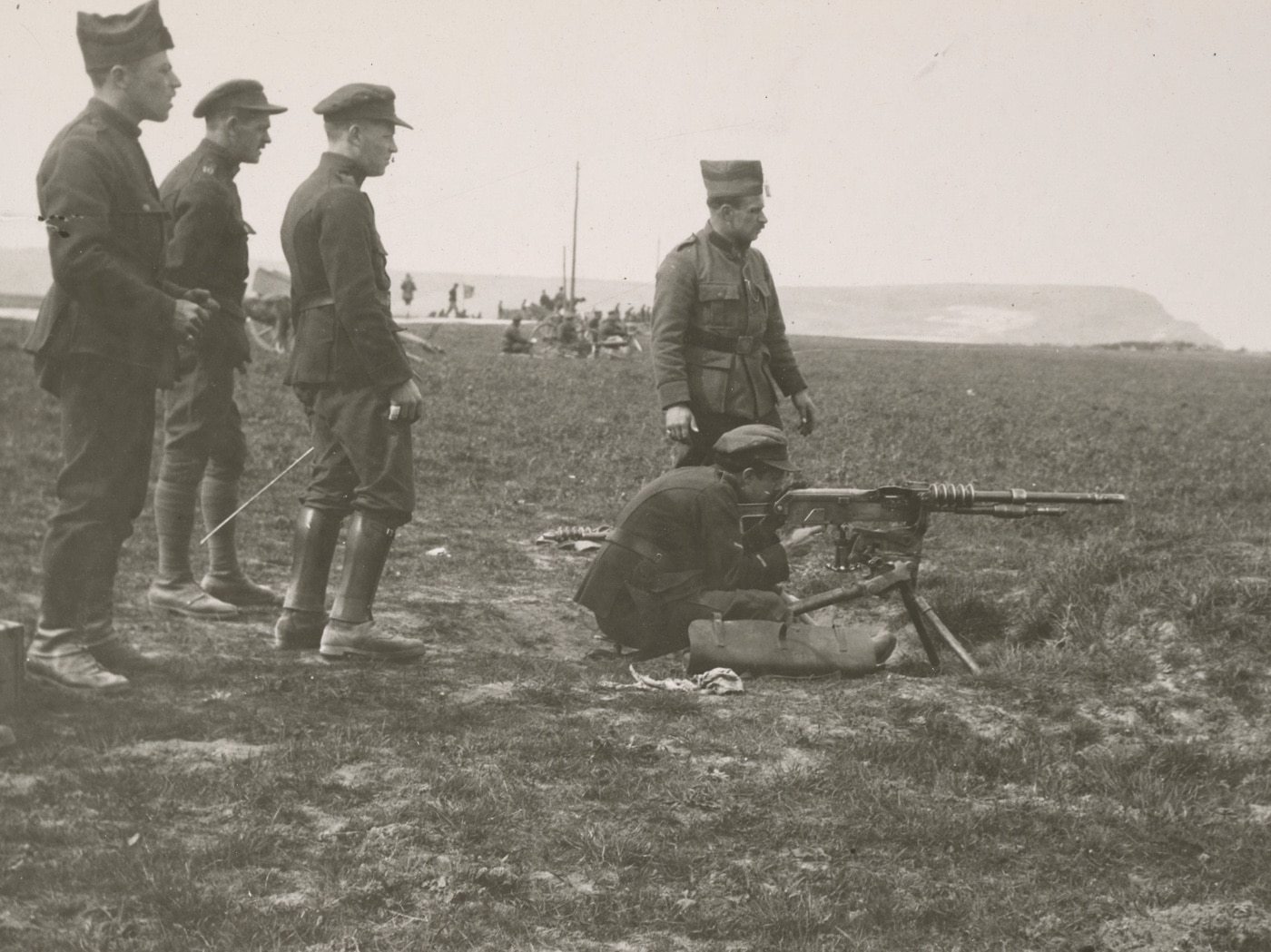
Belgian troops train with the Hotchkiss machine gun in an Army school during 1917. The weapon was one of two standard machine guns adopted by the Belgians during The Great War. Image: NARA
It didnt require a bulky water jacket, but it could quickly overheat.
Its greatest legacy is that it was arguably the first successful and lasting alternative to the Maxim.

Polish troops practice setting up a 1914 Hotchkiss machine gun chambered in 7.92 Mauser, circa 1931. Image: National Digital Archives of Poland
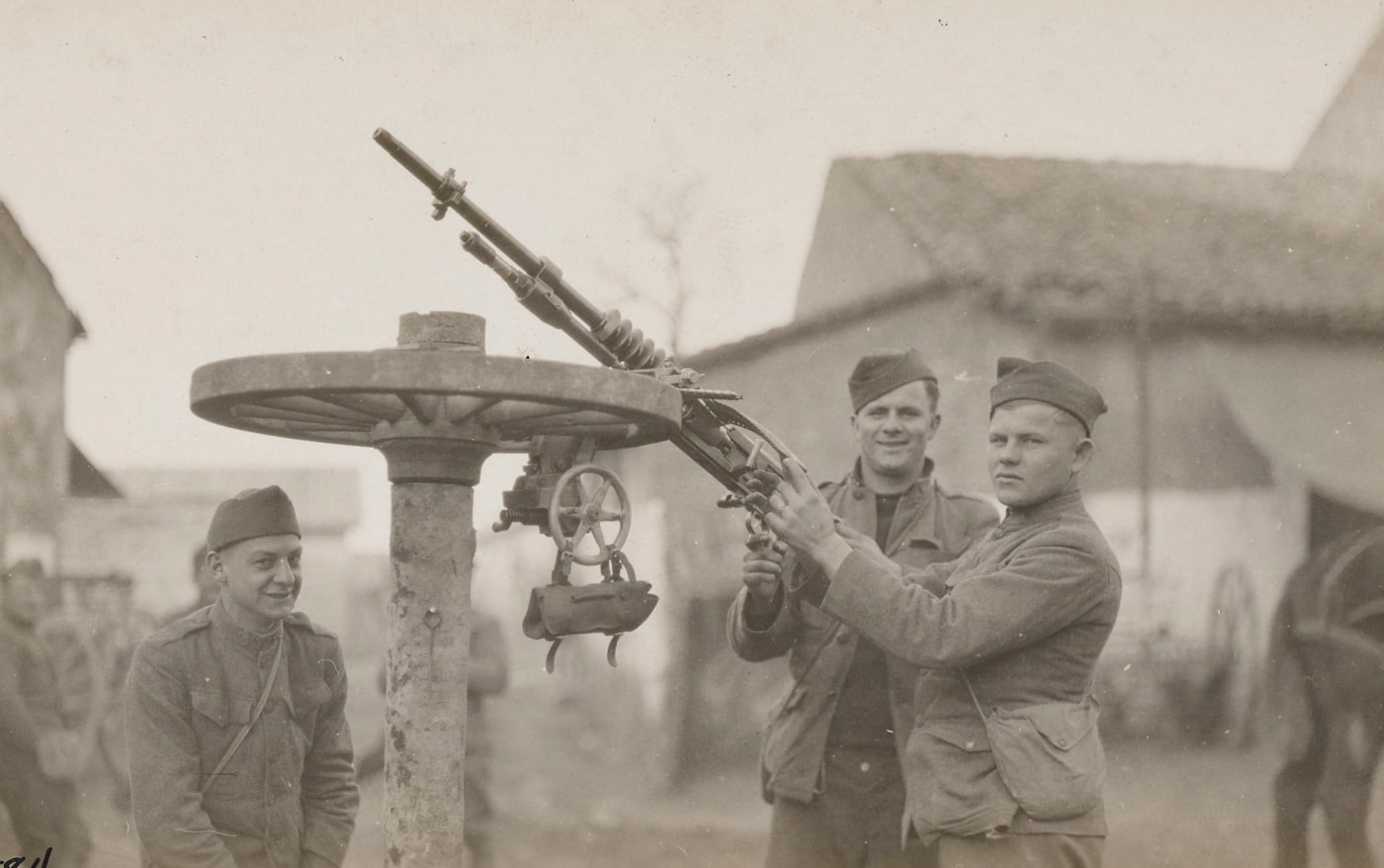
These soldiers mounted a Hotchkiss machine gun to an upturned wagon wheel to improvise an anti-aircraft gun. The photo was taken near Ménil-la-Tour, France on February 17, 1918. Image: NARA
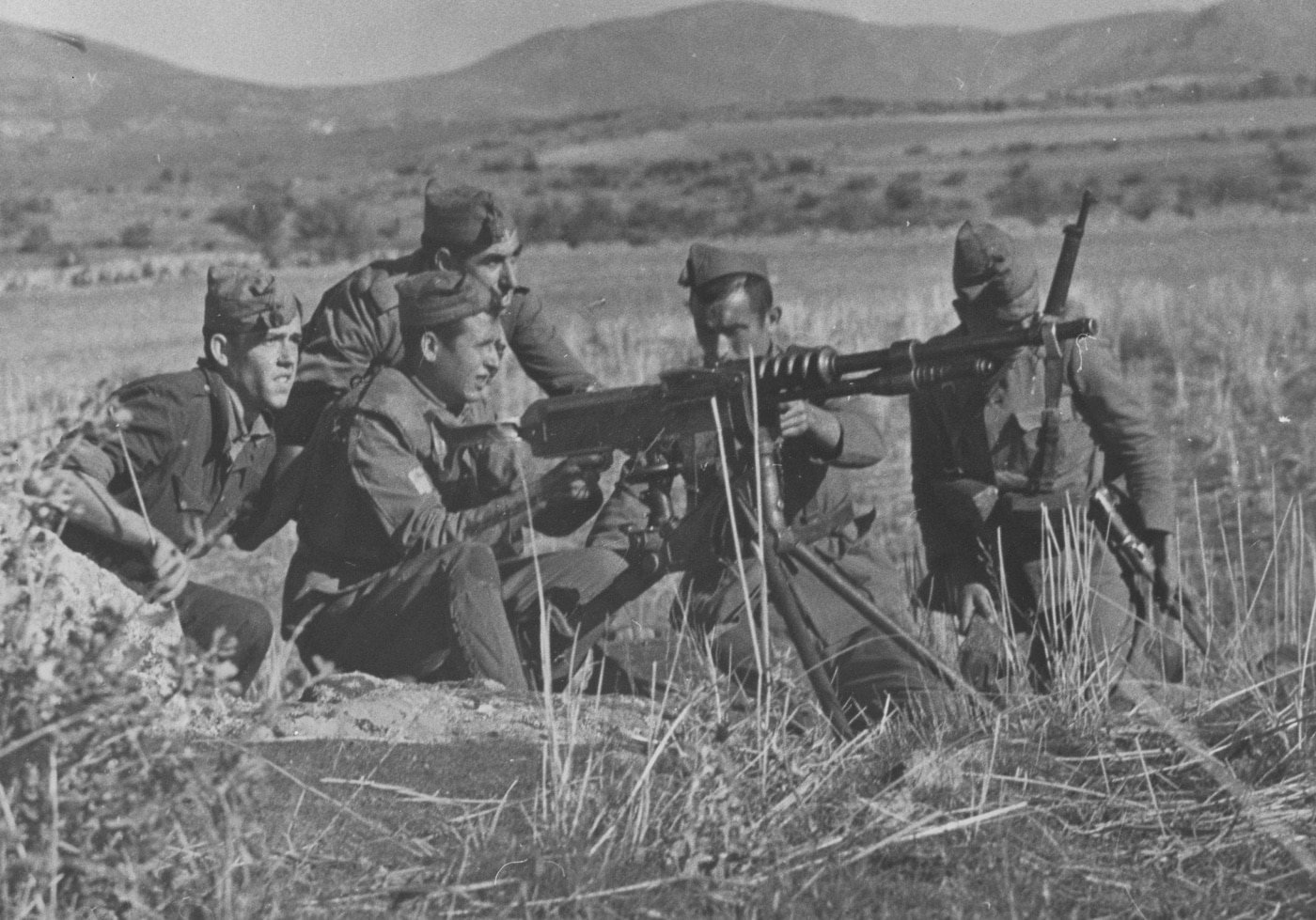
During autumn 1942 military maneuvers in Spain, these Spanish infantry soldiers train with a Hotchkiss heavy machine gun. Image: National Digital Archives of Poland

Shooting a Hotchkiss was part of the 5 x 2 km relay race during an international military skiing competition near Słonim in modern-day Belarus. Image: National Digital Archives of Poland
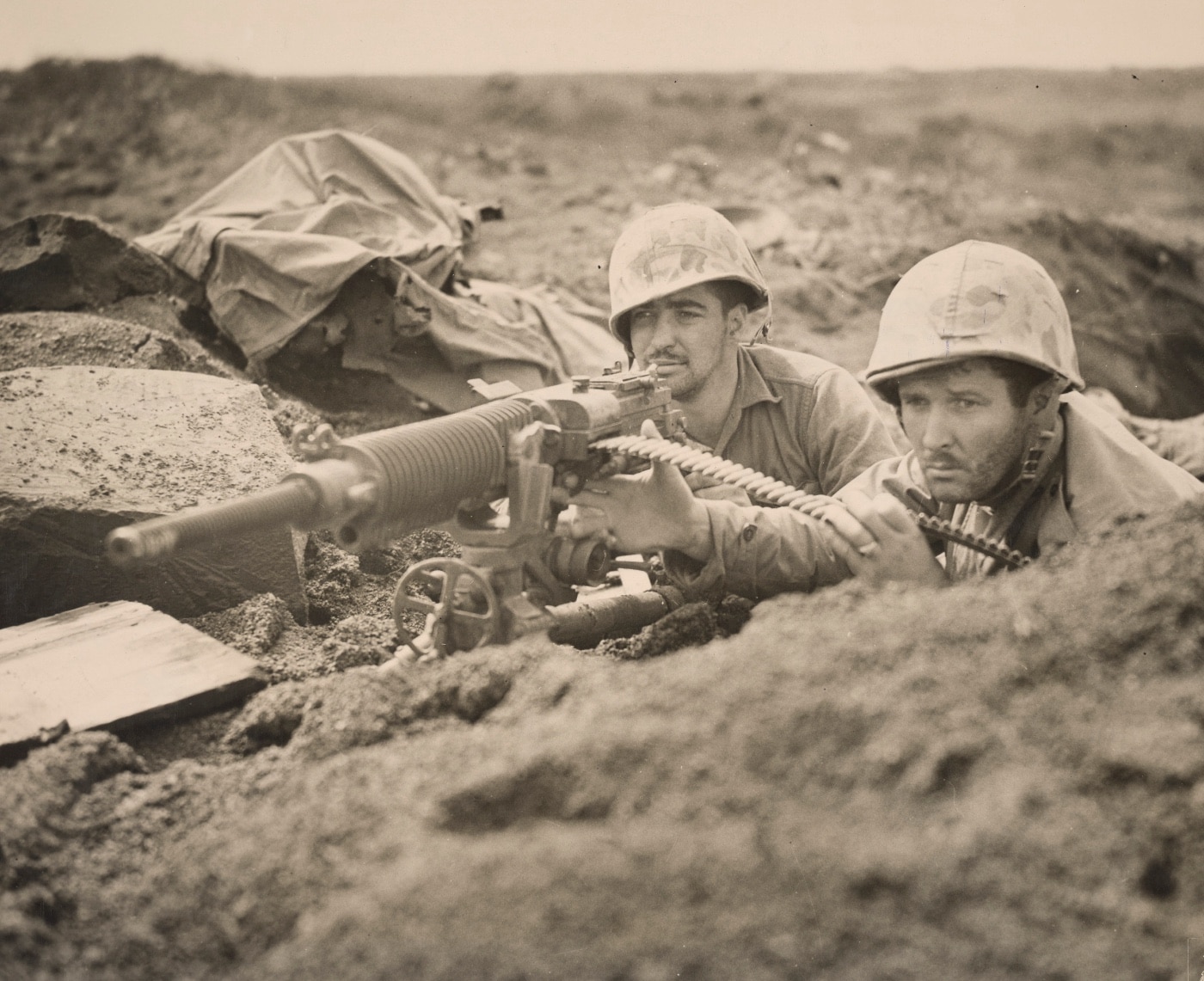
After their own gun was knocked out onIwo Jima, these Marines took over a captured Japanese Type 3 machine gun and gave the enemy a taste of its own medicine. Image: Sgt. J.T. Dreyfuss/USMC




